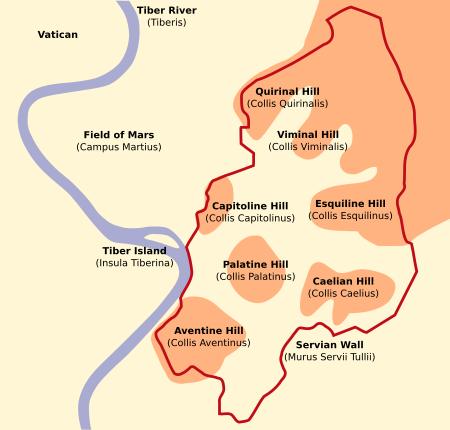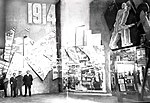The Papal States ( PAY-pəl; Italian: Stato Pontificio), officially the State of the Church (Italian: Stato della Chiesa, Italian pronunciation: [ˈstaːto della ˈkjɛːza, ˈkjeː-]; Latin: Status Ecclesiasticus; also Dicio Pontificia), were a series of territories in the Italian Peninsula under the direct sovereign rule of the pope from 756 until 1870. They were among the major states of Italy from the 8th century until the unification of Italy, between 1859 and 1870.
The state had its origins in the rise of Christianity throughout Italy, and with it the rising influence of the Christian Church. By the mid-8th century, with the decline of the Byzantine Empire in Italy, the Papacy became effectively sovereign. Several Christian rulers – including the Frankish kings Charlemagne and Pepin the Short – further donated lands to be governed by the Church. During the Renaissance, the papal territory expanded greatly and the pope became one of Italy's most important secular rulers as well as the head of the Church. At their zenith, the Papal States covered most of the modern Italian regions of Lazio (which includes Rome), Marche, Umbria and Romagna, and portions of Emilia. These holdings were considered to be a manifestation of the temporal power of the pope, as opposed to his ecclesiastical primacy.
However, by 1861, much of the Papal States' territory had been conquered by the Kingdom of Italy. Only Lazio, including Rome, remained under the pope's temporal control. In 1870, the pope lost Lazio and Rome and had no physical territory at all, except the Basilica of St Peter and the papal residence and related buildings around the Vatican quarter of Rome, which the new Italian state did not occupy militarily, despite annexation of Lazio. In 1929 the Italian Fascist leader Benito Mussolini, the head of the Italian government, ended the "Prisoner in the Vatican" problem involving a unified Italy and the Holy See by negotiating the Lateran Treaty, signed by the two parties. This treaty recognized the sovereignty of the Holy See over a newly created international territorial entity, a city state within Rome limited to a token territory which became the Vatican City.










